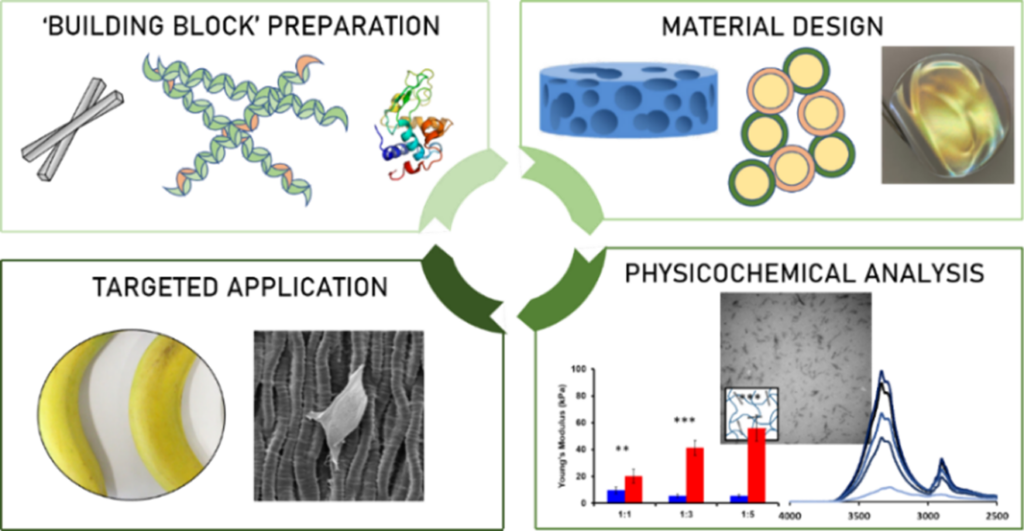Designing Next-Gen Materials from Sustainable Sources
Our research program aims to design high-performance materials from sustainable bio-based sources for application in fields spanning the biomedical, coatings & packaging, and environmental sectors. Specifically, we focus on cellulose- and protein-based nanomaterial ‘building blocks’ such as cellulose nanocrystals and protein nanofibers to create structures including hydrogels, aerogels, emulsions, and films. To do this, we take a circular approach to research, developing building blocks, designing and characterizing materials, and applying them in targeted situations. This allows us to continually learn and better understand structure-function relationships to prepare truly advanced materials. The work in our lab is collaborative, interdisciplinary, and fun! We use principles of materials chemistry, engineering, and nanobiotechnology, with the end goal of replacing petroleum-based products with high-performance renewable materials for a greener future.

Materials from Cellulose Nanocrystals
Cellulose Nanocrystals (or CNCs) are rigid rod-shaped particles produced from cellulose – the most abundant natural polymer on our planet! As a sustainable nanomaterial, CNCs are mechanically strong, colloidally stable, and chemically functionalizable. In addition, CNCs can organize into unique structures, leading to interesting optical and mechanical properties. In our lab, we use all of these exceptional properties to prepare functional materials including emulsions, films, and gels for applications spanning the biomedical, energy storage, packaging, composite materials, and specialty chemicals sectors. Specific projects include the preparation of stable emulsions for drug delivery, structured films for biosensing, and high surface-area materials for electrochemical conversion. In all of our projects, we emphasize CNC functionalization to prepare cross-linked networks, improve compatibility within composite materials, and control final material properties.
Materials from Protein Nanofibers
Protein Nanofibers (or PNFs), composed of organized fibrillar protein aggregates, are another class of sustainable nanomaterial we work with. Once proteins aggregate into PNFs, their properties change – including greatly increased stability and strength. In addition, due to the amino acid groups of the original protein, these fibers are also chemically functionalizable. In our lab, we are interested in monitoring and understanding the aggregation process to form PNFs, with particular emphasis on relating processing conditions to final PNF properties. In addition, we are seeking out new plant-based sources of protein with which to form PNFs. Along with gaining a fundamental understanding of PNF formation and function, specific projects include preparing PNF-based composite materials as antimicrobial coatings, membranes for water treatment, and scaffolds for directing cell growth. Our work in this area is collaborative and interdisciplinary, as we actively work together with other labs at Queen’s University and externally to accomplish research goals.